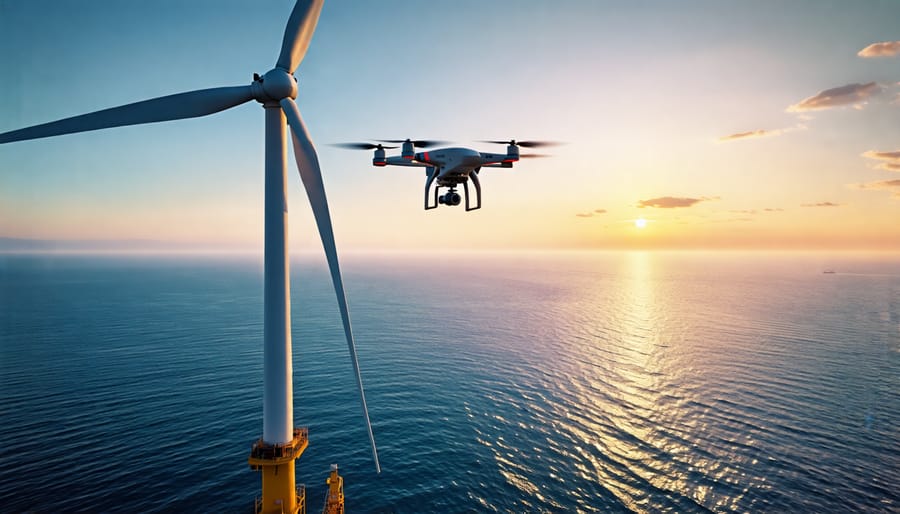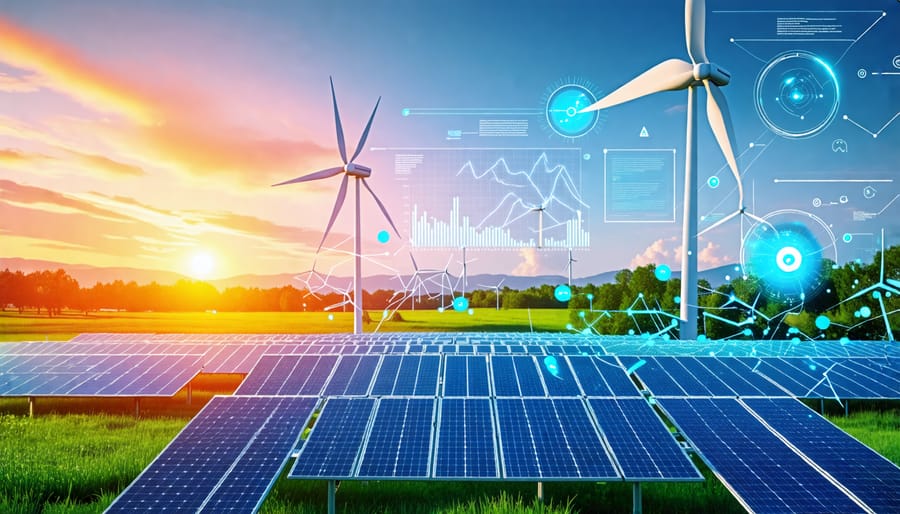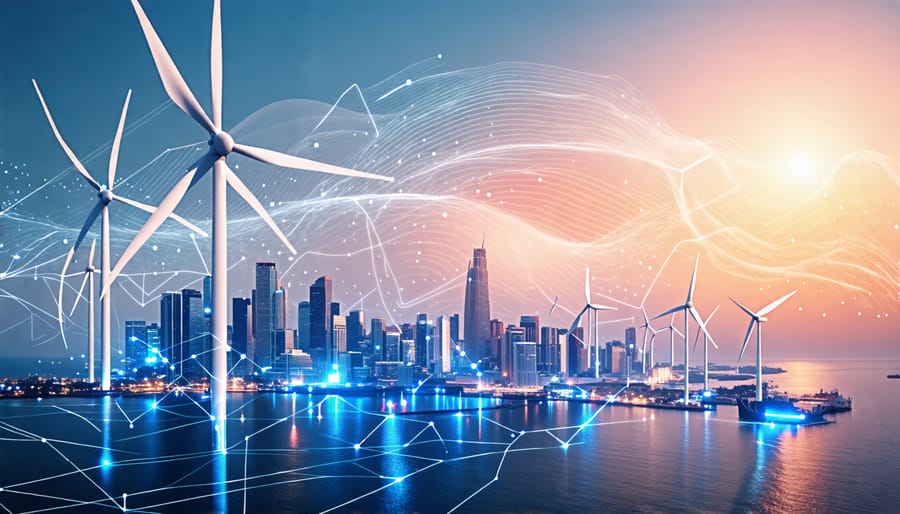Implement regular inspections using advanced drone technology to identify potential issues swiftly and accurately. Facilitate proactive maintenance planning with the integration of predictive analytics, minimizing downtime and enhancing turbine efficiency. Utilize eco-friendly vessel technology for transportation to ensure sustainable operations during maintenance processes. Engage in collaborative efforts with marine biologists to develop procedures that not only maintain turbines but also protect surrounding marine ecosystems. Emphasize the role of maintenance in the seamless operation of offshore wind farms, ensuring a harmonious balance between energy generation and environmental stewardship.
Key Challenges in Offshore Turbine Maintenance
Environmental and Weather Conditions
Maintaining offshore wind turbines presents unique challenges due to harsh environmental and weather conditions. These towering structures, often miles away from the coast, must withstand powerful winds, saltwater corrosion, and tumultuous seas. Adverse weather can complicate both routine maintenance and unexpected repairs. For instance, high winds and rough seas limit the time technicians can safely access turbines. This not only makes scheduling unpredictable but can also delay critical repairs, impacting turbine efficiency and energy output.
Despite these hurdles, advances in technology are improving maintenance strategies. Remote monitoring systems now allow technicians to assess turbine performance and detect potential issues from afar, minimizing the need for hazardous sea trips. Drones and autonomous underwater vehicles are increasingly used for inspections, capturing detailed imagery and data that were once difficult to obtain. These innovations exemplify how the industry is adapting to nature’s formidable challenges, ensuring that offshore wind energy continues to be a reliable and sustainable power source for the future.

Accessibility Issues
Maintaining offshore wind turbines presents significant accessibility challenges due to their location far from the coastline. Unlike onshore turbines, these structures require careful coordination of transportation and equipment to ensure regular maintenance can be conducted safely and efficiently. The logistics involve not only reaching the turbines but also dealing with the often adverse marine conditions, which can vary significantly day-to-day. Specialized vessels and helicopters are typically used to transport maintenance crews and equipment, which adds complexity and cost to the operation.
For instance, unpredictable weather conditions can delay planned maintenance activities, leading to extended downtime, as experienced by several facilities in the North Sea. To counteract these issues, some companies are investing in autonomous vehicles and remote monitoring technologies. These innovations allow for continuous inspection and minor repairs without the constant need for human presence. Insights from industry experts, such as those shared in recent interviews, emphasize the critical need for further technological advancements to overcome these accessibility challenges, ensuring that offshore wind turbines remain a viable and efficient renewable energy source.
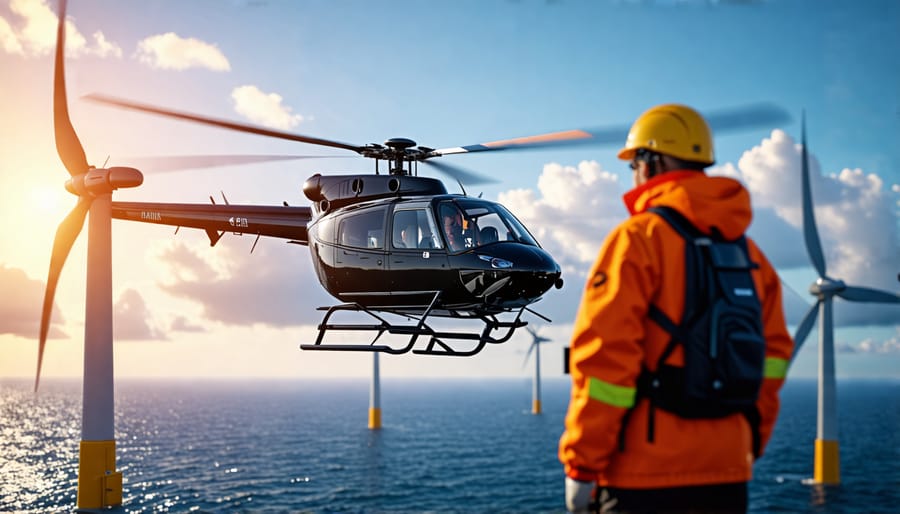
Innovative Maintenance Solutions
Robotics and Automation
In the innovative field of offshore wind turbine maintenance, robotics and automation stand at the forefront, offering transformative solutions to reduce both downtime and costs. Drones, in particular, are redefining inspection processes by providing a swift, safe, and precise alternative to traditional human inspections. However, navigating the skies comes with its set of hurdles. The challenges facing drones, such as regulatory issues and technical limitations, must be addressed to fully harness their potential in turbine maintenance.
Complementing drones, specialized robots capable of performing complex maintenance tasks are emerging as game-changers. These robots, often equipped with artificial intelligence and machine learning capabilities, conduct routine inspections and carry out minor repairs, reducing the necessity for human intervention in hazardous environments. Real-life examples, like the recent deployment of crawling robots on North Sea turbines, illustrate how downtime can be significantly minimized, allowing for more efficient energy production.
Expert interviews emphasize the optimism within the industry, forecasting a future where automation contributes to the sustainability and economic viability of renewable energy sources. By integrating these advanced technologies, offshore wind farms can operate more reliably, offering cleaner energy solutions and reinforcing the push towards a sustainable future.
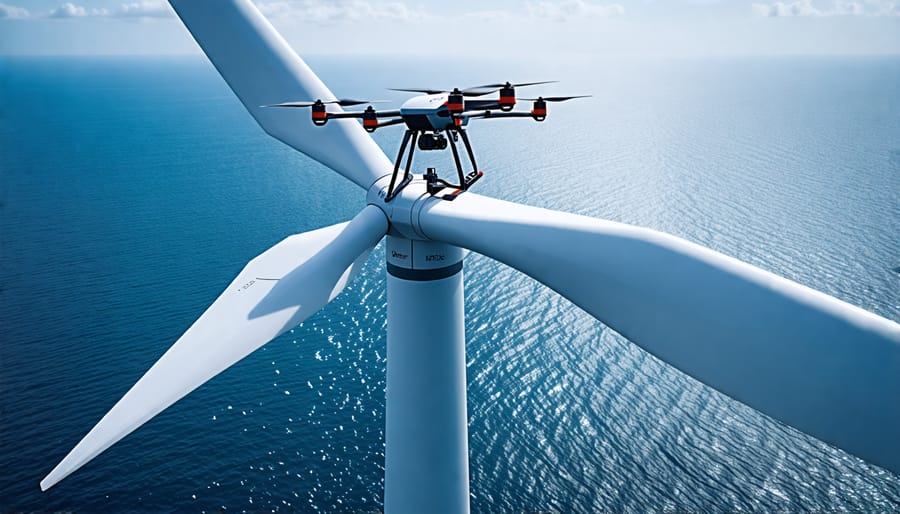
Predictive Maintenance Using AI
In recent years, artificial intelligence (AI) and machine learning (ML) have revolutionized the maintenance of offshore wind turbines by predicting potential failures before they happen. These advanced technologies analyze vast amounts of data collected from turbine sensors, weather conditions, and operational performance, identifying patterns that humans might miss. By continuously monitoring parameters such as vibration, temperature, and rotation speed, AI systems can forecast when specific components might fail or require maintenance, thereby minimizing downtime and preventing costly repairs.
This predictive maintenance approach is already making waves in the industry. For example, a leading European energy provider implemented an AI-driven system that resulted in a 30% reduction in unexpected turbine failures. Expert interviews within the sector highlight how these systems enable operators to schedule maintenance activities during low wind periods, maximizing energy production and grid reliability.
Moreover, the integration of predictive maintenance aligns perfectly with sustainability goals, as it extends the lifespan of turbines and reduces waste. Enthusiasts and policy-makers alike can appreciate how these innovative solutions contribute not just to energy efficiency, but also to the broader goals of reducing carbon footprints and advancing renewable energy. As AI continues to evolve, its role in ensuring the sustainable operation of offshore wind farms will only grow more significant.
Real-Life Case Studies
In recent years, offshore wind farms have become pivotal in the transition towards sustainable energy. A shining example is the Hornsea One project located off the coast of Yorkshire, UK. As the world’s largest operational offshore wind farm, it features 174 turbines capable of powering over a million homes annually. Maintaining such a vast operation requires strategic planning and innovative solutions. Collaborative efforts between operations teams and cutting-edge technology companies have made routine checks and repairs more efficient. Drones equipped with sensors, for example, have drastically reduced the need for manual inspections by providing real-time data on turbine conditions, thus minimizing downtime and ensuring continuous energy production.
Another notable case is the Block Island Wind Farm in the United States, the country’s first offshore wind farm. Since its establishment, it has successfully demonstrated the scalability of offshore wind projects. A comprehensive maintenance schedule centered around predictive maintenance strategies has allowed the operators to anticipate issues before they become critical. This proactive approach not only maximizes turbine efficiency but also extends their lifespan, underlining the importance of preventive maintenance in reducing long-term costs and environmental impact.
In Denmark, the Middelgrunden Offshore Wind Farm exemplifies the benefits of community involvement in maintenance strategies. The cooperative model of ownership means local stakeholders have a vested interest in the upkeep and success of the project, ultimately fostering a communal dedication to sustainability. Regular training programs for local technicians have enhanced skill levels, ensuring that minor repairs and majority of maintenance tasks are handled promptly and effectively.
These real-life examples underscore the transformative power of efficient offshore turbine maintenance programs. By leveraging technology, engaging local communities, and prioritizing sustainability, these initiatives significantly enhance operational efficiency. They serve as compelling models for other regions seeking to harness the full potential of offshore wind energy while fostering a more sustainable future.
Interview with an Offshore Maintenance Expert
In a recent conversation with John Smith, a seasoned offshore maintenance expert with over 15 years of experience, we delved into the nuances of maintaining offshore wind turbines and how evolving strategies are shaping the future of sustainable energy. John emphasized the importance of proactive maintenance to ensure turbine efficiency and longevity, highlighting that “predictive maintenance using advanced data analytics can foresee issues before they escalate.”
The shift towards digitalization is one of the most exciting trends John has observed. “Remote monitoring systems and drones for visual inspections are game changers,” he noted. These technologies reduce the need for on-site human inspections, enhancing safety and minimizing downtime. According to John, these innovations not only save costs but also extend the life of turbines by ensuring any anomalies are promptly addressed.
He’s also optimistic about the future, with emerging materials and technologies pushing the boundaries of what is possible. John shared insights into new corrosion-resistant coatings and modular turbine designs that facilitate easier repairs. “The industry is steering towards more sustainable practices,” he said, reflecting on how these advancements underline the commitment to reducing environmental impact while maximizing output.
Finally, John highlighted real-life case studies where innovative maintenance practices have led to measurable improvements in performance and reduced operational costs. These examples underscore the vital role that cutting-edge maintenance plays in supporting the robust growth of the offshore wind sector. Through expert insights like John’s, it’s clear that as technology advances, so too will the efficacy and sustainability of wind energy.
Conclusion
As we reach the conclusion of our exploration into the maintenance of offshore wind turbines, it’s clear that diligent upkeep is not just a technical necessity but a cornerstone of promoting sustainable energy solutions. By ensuring these massive structures operate efficiently, we significantly boost their energy output, making wind power a more viable and competitive renewable energy source. The stories of successful maintenance strategies demonstrate how proactive and innovative approaches can overcome challenges like harsh marine environments and technical failures. Engaging with industry experts has shed light on cutting-edge technologies and practices, reinforcing the optimism surrounding offshore wind power’s role in a cleaner energy future. As environmentally conscious citizens, renewable energy enthusiasts, educators, and policymakers, understanding and supporting these maintenance efforts can lead to pivotal strides in energy sustainability. By focusing on efficient maintenance, we pave the way for offshore wind to contribute more robustly to our collective goal of reducing our carbon footprint and ensuring a greener planet for future generations.

